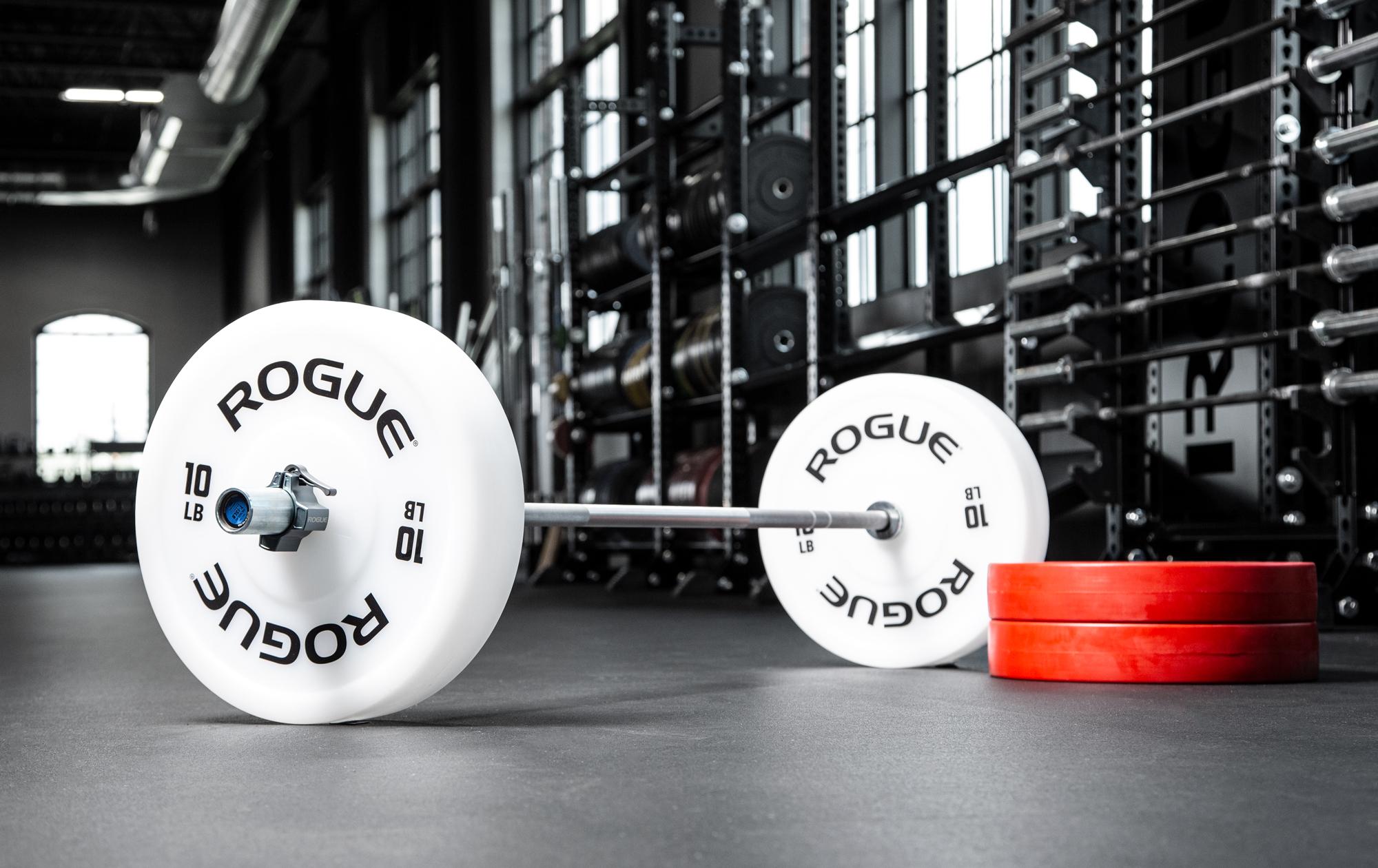REP fitness sports plates vs Rogue technique plates
This is a comparison between the Rep Fitness sports plates and the Rogue technique plates. Follow the links for more details.
Overview and review of the Rogue Technique plates
The Rogue technique plates will set you back about $125 - $160 dollars. These plates are especially good to use for beginning weightlifters. This overview has originally been published in the article "Which rogue plates to buy" which you can find on this blog
What else to consider from Rogue
- Which belt to buy from Rogue
- Which barbell to buy from rogue
- Which rack to buy from Rogue over $1000
- Which rack to buy from Rogue for under $1000
- Which plates to buy from Rogue
- Which strength equipment to buy from Rogue
- Which conditioning equipment to buy from Rogue
- Which Equipment package to buy from Rogue
- Which accessory to get from Rogue
- Which jump rope to get from Rogue
- Which knee sleeve to get from Rogue
Overview of the technique plates
Technique plates are special plates which have the same diameter of 450mm than regular competition plates but at a much lower weight. This is achieved by using high-density polyethylene Plastic (HDPE). These are the right plates to teach beginners, juniors or getting rehabbing athletes back to lifting. These plates combined with a technique bar can lower the weight of the bar for a beginner to 15kg to enter the sport of Olympic weightlifting. If you work a lot with children or very unfit beginners, this is a good plate to add to your arsenal.
The technique plates are available in red and white in 2.5kg, 5kg, 5lb, and 10lb versions. They have the following specs:
- 450mm Diameter
- 50.2mm Center Hole Diameter
- Grooved edge for easier handling
Pros of the technique plates
Technique plates help to ease into the sport and to hone your lifts to perfection. If your gym or yourself are serious about Olympic weightlifting they will be a great addition to your arsenal to grind on technique without wreaking your body.
Cons of the technique plates
These plates have a very narrow and specialized use case. If you do not enter the realm of Olympic weightlifting you will probably only get very little use out of them.
Alternatives to the technique plates
Alternatives to technique plates are:
Fractional plates and change plates help you to work with lower denominations in work and to microload . In most cases you will get more use out of these for everyday training than out of technique plates.
Overview and review of the REP fitness sports plates
This is an overview of the REP fitness sports plates including pros, cons, and alternatives. The original was published under which plates to buy from rep fitness. Follow the links for more details.
Sport plates $69
The REP sport plates fill the gap between competition plates and bumper plates by being super durable, forgiving when you use them outside, and still being decent when dropped from overhead. The only two negatives about these plates are price and how they travel during an Olympic lift. The full specifications of these plates are:
-
Ultra-durable. Seriously.
-
Textured rubber around the outer edge for easy handling.
-
Low bounce.
-
Great for commercial use.
-
Up to 10% quieter than standard black bumpers when dropped from overhead.
If you are intending to outfit a boutique gym and want to impress your clients without getting competition plates, then these are the ones. For a home gym, I would be a bit more specific about what you mostly do what your plates and make my investment from there.
Pros of the REP Sport plates
The pros of the rep sport plates are:
-
Rubber plates with a competition design
-
Color-coded plates
-
Durable
-
Price compared to competition plates
These rubber plates have been done from a mold that emulates the shape and feel of competition bumper plates. The only big difference is that there is no metal disc in the middle. This makes them easier to ease outdoors and more forgiving when used for anything else than Olympic lifts.
Compared to regular bumpers these plates are also color-coded. This looks cooler and also has some practical value to keep the plates apart when you are training.
As these plates are full rubber they really can take a punch. If you are expecting these plates to be maltreated a lot, then go for these instead of regular bumpers.
The price on these plates compared to competition plates is about half. If you rebuilding a home gym that trains everything under the sun give these plates a serious look before you buy competition bumpers or regular bumpers.
Cons of the REP Sport plates
-
Not IWF certified
-
Lifting dynamic on Oly lifts
-
Price compared to regular bumper or Iron plates
-
Bar space
These plates are not IWF certified and hit differently for Olympic lifts than competition plates. When you clean or snatch these pates there just a little different from how they fight gravity compared to competition plates. This is minimal, but minimal counts if you are an elite Olympic lifter. Still, that does not apply to most of the population out there.
Compared to regular bumper plates and iron plates these are still a lot more expensive. So ask yourself if you really really need plates with a low bounce and 10% less sound when dropped. 10% less sound still means loud enough to wake the kids and annoy the neighbors without a drop pad. If you get a drop pad, why get the sports plates? If you don't lift overhead, why not just get iron plates?
Compared to iron plates these plates take up more space on the bar. If you lift more than 5 plates on each side on a regular basis this becomes and you should opt for iron plates. Again the exception, rather than the norm.
Alternatives to the REP Sport plates
Alternatives to the REP fitness sports plates are:
-
REP Iron plates
-
TITAN competition plates
If you want to stay with REP seriously ask yourself what you use your plates for. Chances are high that you should get bumpers or Iron plates instead based on your use case. The only exception is a boutique or strength gym that charges a high membership. This is the plate to get to keep clients happy without breaking the bank.
If you would like black plates with color coding and a metal insert, then the Rogue black training plates are for you. I have these plates myself as they were the only ones available when I started my Rogue-themed gym and they were a bit of an indulgence. But I train 5 times a week, run a fitness blog, and try to impress people on my social media channels. Unless you don't care that much about the money they are not really for the average joe. If you want to indulge yourself as a personal lifter, have a look at the mechanized Rogue iron plates.
TITAN also offers competition plates iron plates and bumper plates. TITAN is cheap and has more quality issues compared to Rogue and REP based on my research. I personally think TITAN has to be seen as an "I want the best package deal on my home gym" approach.
Conclusion for the REP Sport plates
The REP sport plates are a great option for the boutique gym that wants to tell their clients "this is why you train here and not around the corner". A dedicated all-around athlete at home will also appreciate the money saved compared to competition plates and not feeling cheap for getting regular bumpers. IN most cases Iron plates or bumper plates are the better choices based on what you are using them for to save money for things like kettlebells, a nice barbell, or an adjustable bench on your cart.


